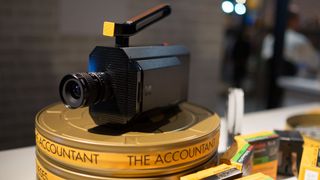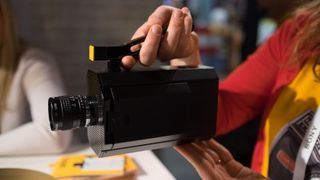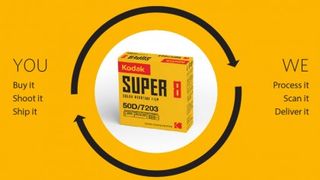Kodak's Super 8 film camera is not so crazy after all
Kodak has really thought this through, with an end-to-end processing system and big-name endorsements.

Kodak is celebrating 50 years of making Super 8 film at CES 2016 with a new movie camera. Now it would be easy to write this off as some kind of lame retro headline grabber, but Kodak is deadly serious, and so are the A-list Hollywood filmmakers who've expressed their support on the Kodak website, including JJ Abrams, Steven Spielberg, Quentin Tarantino for starters.
"While any technology that allows for visual storytelling must be embraced, nothing beats film. The fact that Kodak is building a brand new Super 8 camera is a dream come true," says Abrams.


But how does it work?
Super 8 film comes on 50ft (15m) cartridges, each capturing around 3,600 frames of film. The Kodak camera shoots at 9, 12, 18, 24, or 25fps – at a 'cinematic' 24fps, that gives around 2 minutes and 30 seconds shooting time.
The cartridges are completely light-proof and contain their own take-up spool. When you've finished filming, you take out the cartridge and send it off for processing.
But where can you get Super 8 processed?
Kodak's planned this from the start. "You buy it, shoot it ship it. We process it, scan it, deliver it". Kodak's aim is to combine the 'magic' of analog with the convenience of digital, so what you get back is a password to retrieve your digital scans from the cloud.

So no, you don't have to learn how to use splicing kits and all the other old analog editing paraphernalia.
Analog meets digital
The camera itself merges analog and digital, with a 3.5-inch articulating digital viewfinder. It doesn't offer the sophisticated metering and autofocus systems of a DSLR or mirrorless cameras, but it does have a built-in exposure meter and it can detect the film speed automatically when you insert a film cartridge. You get manual iris (aperture) and manual focus control.
Get daily insight, inspiration and deals in your inbox
Get the hottest deals available in your inbox plus news, reviews, opinion, analysis and more from the TechRadar team.
The lens choice is a fixed focal length 6mm f/1.2 Ricoh lens, or an 8-48mm zoom – the camera uses C-mount lenses, a common analog movie camera format.
There's an integrated microphone and a top-handle grip for waist-level filming. A pistol grip attachment is also available.
Pricing has yet to be officially confirmed, but early indications are that the camera will arrive later in 2016 at a price somewhere between US$400 and US$750 (about £275-£515/AU$570-AU$1,070), and that the all-in price for Super 8 film cartridges, processing and digitization will be US$50 to US$75 (about £35-£52/AU$72-AU$107).
Kevin Lee was a former computing reporter at TechRadar. Kevin is now the SEO Updates Editor at IGN based in New York. He handles all of the best of tech buying guides while also dipping his hand in the entertainment and games evergreen content. Kevin has over eight years of experience in the tech and games publications with previous bylines at Polygon, PC World, and more. Outside of work, Kevin is major movie buff of cult and bad films. He also regularly plays flight & space sim and racing games. IRL he's a fan of archery, axe throwing, and board games.

